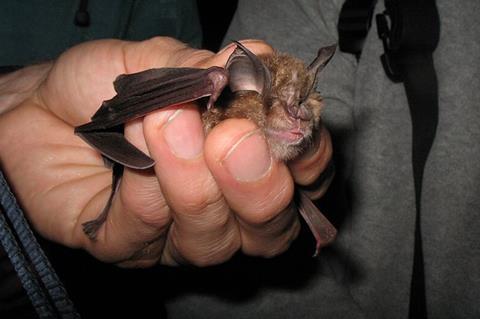A groundbreaking study published in Nature’s Communications Biology sheds new light on the relationship between bats and dangerous viruses. Led by researchers at the University of Oklahoma, the study shows that contrary to widespread assumptions, not all bats carry viruses with high epidemic potential, only specific groups of species.

Many high-consequence viruses — pathogens with significant potential to cause severe illness, death and widespread transmission — originate from wildlife. Bats have been identified as carriers of numerous viruses, including but not limited to SARS-like coronaviruses, Marburg virus, and Hendra and Nipah viruses.
READ MORE: Researchers develop machine learning model to predict virus reservoirs
READ MORE: Co-infections in young bats could underpin coronavirus emergence
However, bats are beneficial to their ecosystems, and different bat species provide distinct services to their environments. In Oklahoma, Mexican free-tailed bats consume agricultural pests, thereby helping to ensure that crops can flourish. Fruit bats, on the other hand, serve as pollinators in their communities.
“If we lost bats, agricultural production would be negatively affected, and so would economies,” said Caroline Cummings, a doctoral student in the School of Biological Sciences and the lead author on the paper.
Clustered traits
Cumming’s research uncovered that far fewer bats carry dangerous viruses than is commonly assumed. Using advanced machine learning, the team identified specific groups of bat species that are more likely to host highly virulent and transmissible viruses. The research found that, for some viruses, these traits tend to cluster among closely related species.
“Instead of all bats carrying all dangerous viruses, it’s only specific bats that have co-evolved with specific viruses, and that’s why they tend to live with them and not be sick,” Cummings said.
With the rate of infectious disease emergence increasing in humans, predicting which wildlife species may harbor viruses is useful for viral surveillance and conservation efforts. Cummings says viral surveillance is typically time-, labor- and cost-intensive, and these results can help mitigate some of that intensity by narrowing down what to sample. Efforts can be targeted to focus on high-risk groups of bat species.
Focusing viral surveillance
To further help focus viral surveillance, Cummings also mapped how these groups of high-risk bats overlap with areas of high habitat disruption and human encroachment. Habitat disruption and human encroachment can increase virus transmission from bats to humans, both by increasing contact between species and by causing stress for bats, potentially taxing their immune systems and increasing viral shedding.
A healthy, undisturbed bat colony maintains better immunological balance, effectively keeping viruses in check. Cummings says conservation efforts aimed at protecting bat habitats could reduce the risk of spillover and preserve the critical ecosystem services bats provide.
Zoonotic risk
“This work brings much-needed nuance to discussions around bats and their role as viral hosts,” said Dr. Daniel Becker, assistant professor in the School of Biological Sciences and senior author on the paper. “The literature has often made broad, sweeping statements about bats and zoonotic risk. By being able to identify which particular groups of bat species carry dangerous viruses, and where they most overlap with human impacts, we can minimize negative human–bat interactions.”
Beyond conservation and viral surveillance, Cummings says future research into the immune systems of these groups of bats that harbor dangerous viruses could lead to interesting developments in therapeutics. Understanding the adaptations these species have made to coexist with these viruses could be used for future medical advancements.
Topics
- bats
- Caroline Cummings
- conservation
- Daniel Becker
- Early Career Research
- Ecology & Evolution
- Emerging Threats & Epidemiology
- habitat disruption
- Healthy Land
- human encroachment
- Immunology
- Infectious Disease
- One Health
- Research News
- University of Oklahoma
- USA & Canada
- Veterinary Medicine & Zoonoses
- viral surveillance
- Viruses







No comments yet